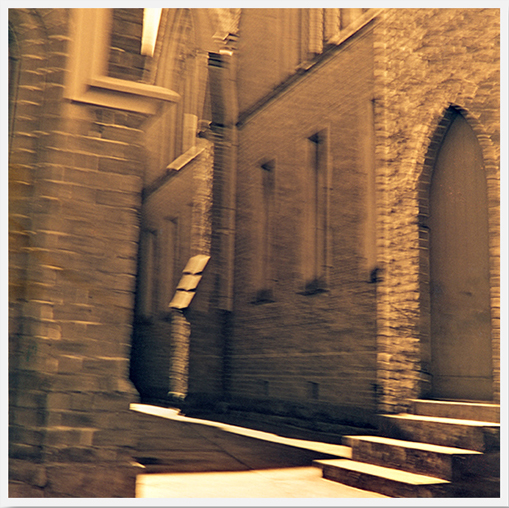 Les Walkling, The walls of the world, 1100mm x 1100mm, Inkjet Pigment Print
Les Walkling, The walls of the world, 1100mm x 1100mm, Inkjet Pigment Print
For some things words have little purpose. And when words fail us and our faith falters images become the last refuge of a troubled mind. Yet the implied pictorial logic also too often escapes us as distractions overwhelm us, and greed and selfishness numbs us. But listening carefully, pictures can tell us a lot.
For one thing, they distill time and space into a singularity, forever patient and willing to cooperate. But without a purpose, or at least sentience of their own, we have to take on the responsibility for times past, present and future. An image is finally resolved when its sense of chaos and comprehension no longer bothers us. Though not through sheer exhaustion, but due to a willingness on our part to allow it something of its own; to be what it is without us having to tell it.
But such encounters take time to understand, and we can often lose our way along the way. For there is no time limit on eternity, and too many casual relationships we can’t imagine. And as photography continues to gather and disseminate itself in ever more interesting and fractured ways, the monumental calmness of a still picture, even one depicting agitated minds or sullen and tragic moments, pervades itself without hesitation. It is just there, and without remorse, as we walk around it. It is persistent and stubborn to the point that we can’t afford to ignore it.
But the lessons, though many and splendid are hard won. For there is nothing sadder than a relationship lost to itself, buried at best in forgotten moments and wayward gestures, and at worst in acts of atrocity and lawless condemnation. But from compelling pictures and their contemplation, we can take time out to consider and reconsider what they will permit, or refute, or refuse to become. Like ancient trees passing time, some pictures appear to posess our world and everything in it. But their willingness, patience, and the empathy required to momentarily forget who we are, and become kinder, quieter, and capable of reconciliation, repatriation and justice, is still in short supply despite no shortage of pictures.
So perhaps it is not the pictures themselves, but our unwillingness to believe and invest in them that we so desperately need.
I acknowledge the Wurundjeri Woi Wurrung people of the Kulin Nation as the Traditional custodians of the lands and waterways in the area where I was born, live and work, and pay respect to their Elders past, present, and emerging, as well as to all First Nations’ people present, past and future. Ngoon Godjin.
{ 0 comments }


